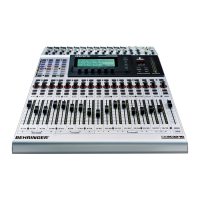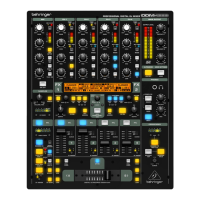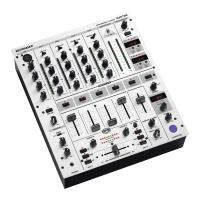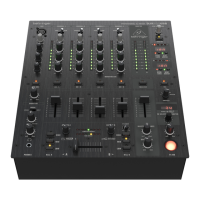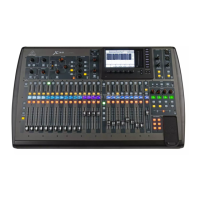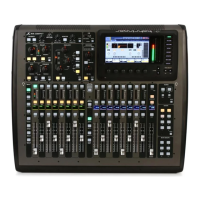52
Fig. 17.6: Unbalanced connection (S/PDIF)
17.3 MIDI
The MIDI standard (Musical Instruments Digital Interface) was
developed in the early 80’s to enable electronic musical
instruments of different brands to communicate with each other.
Over the years, the range of MIDI applications has constantly
been expanded, and today it is completely normal to network
entire recording studios using the MIDI standard.
At the heart of this network we find a computer loaded with a
sequencing software that controls not only the keyboards, but
also effects and other peripheral devices. Your DDX3216 can
be integrated easily into such a studio environment.
The MIDI connectors on the rear panel are internationally
standardized 5-pin DIN jacks. To connect your DDX3216 to other
MIDI equipment, you need dedicated MIDI cables, which are
commercially available in various lengths. However, you can
also use two-conductor shielded cables (e. g. microphone
cables) and two rugged 180° DIN plugs to make your own MIDI
cables: pin 2 (center) = shielding; pins 4&5 (right and left of pin 2)
= internal conductor; pins 1&3 (the two outer pins) are not used.
MIDI cables should not be longer than 50 feet.
+ Make sure that pins 4 and 5 on one plug are
connected to the corresponding pins on the other.
MIDI IN: receives MIDI controller information.
MIDI THRU: provides an identical copy of the signal received at
the MIDI IN.
MIDI OUT: the MIDI OUT allows you to transmit data to a
computer or other MIDI equipment connected.
17. INSTALLATION

